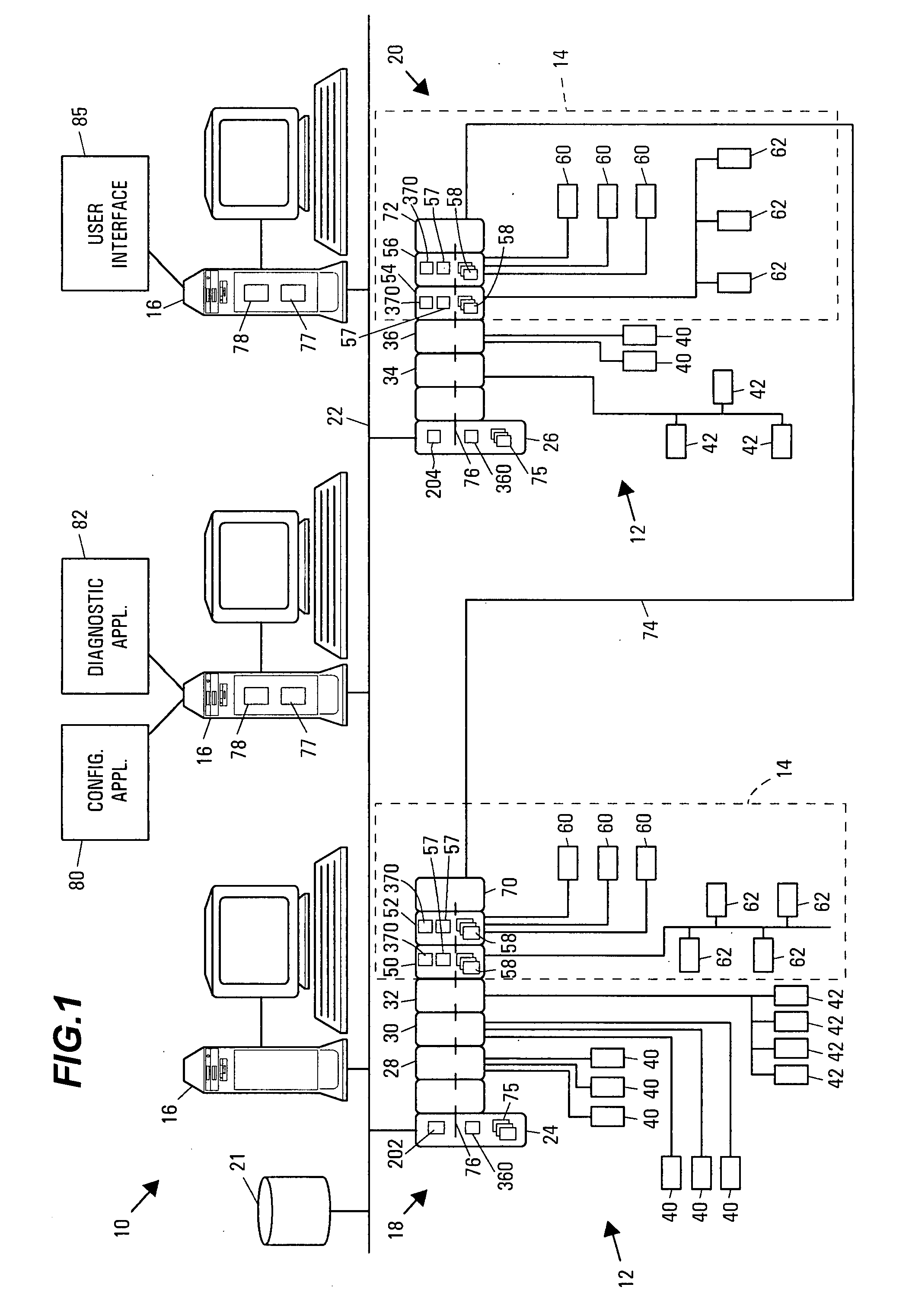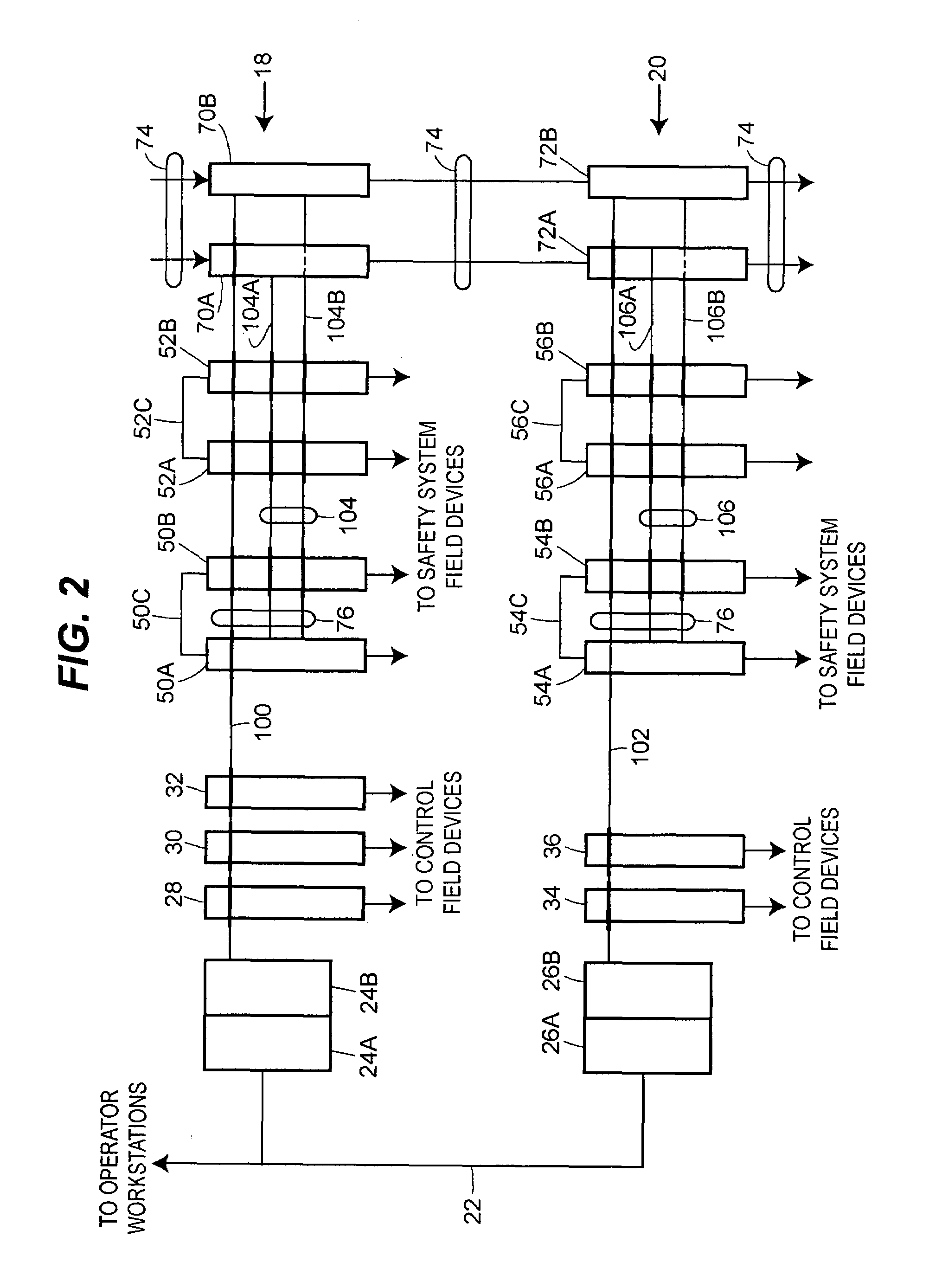Furthermore, in many processes, a separate safety system is provided to detect significant safety related problems within the process
plant and to automatically close valves, remove power from devices, switch flows within the
plant, etc. when a problem occurs that might result in or lead to a serious
hazard in the
plant, such as a spill of toxic chemicals, an explosion, etc.
Isolation between process controllers and safety controllers is considered important (and is frequently mandated by applicable government standards) because using a process controller to perform safety functions results in the simultaneous failure of the safety functions and the process control functions when that process controller fails.
However, the safety functions become most critical when the process controller fails because, at that time, the process is partially or wholly out of control.
In fact, in some cases, because safety systems do not use the process control
system hardware and
software infrastructure, different and completely unconnected safety
system hardware and software is used at different locations, such as at different nodes, within the same process plant.
In any event, the isolation between the process control system and the safety system leads to a number of different and unconnected safety systems in the same plant that must be configured and monitored separately.
Likewise, different personnel are typically needed to perform configuration, diagnostic and monitoring activities with respect to these different systems, all of which leads to extra costs in terms of configuring and running a process plant that uses a safety system.
Moreover, because the safety
system configuration and diagnostic software is different from the control
system configuration and diagnostic software, persons must typically be trained separately on these different software programs leading to increased
training time.
Unfortunately, traditional control systems do not provide the flexibility to differentiate safety system data from control system data.
As a result, once the safety
system information is integrated into the control system applications, the safety system values appear the same as the control system values being displayed to the user, making it difficult to track or differentiate the safety system data.
These
data mapping techniques require additional user
programming both to set up and to maintain and may lead to erroneous data due to errors introduced by the mapping function.
Still further, security becomes harder to
handle in systems which attempt to integrate safety system data into a traditional control system application.
This function is inherently more error prone and hence less secure because it relies on the person
programming and maintaining the HMI to ensure that all values from the safety system are correctly mapped into the control
system interface.
Furthermore, such a mapping technique makes the HMI safety critical, which complicates the safety
instrumentation system, making it much more difficult to test and prove the
safety integrity level.
As a result, these known
user interface integration systems lack the ability to place safety
instrumentation system read and write values directly on a user graphic without requiring mapping between the control and the safety system configurations or without special safety
instrumentation control logic located in the safety system controllers that creates a ‘firewall’ between the
operator interface and the safety instrumentation system logic, to thereby prevent unauthorized writes to the safety instrumentation system.
Moreover, these known integrated
user interface systems lack a secure write mechanism that assures that no corruption of the entered value or path takes place during a write to the safety instrumentation system, and lack unique safety security built into the control system that assures that all writes of values to the safety instrumentation system require special privileges, whether from a process graphic or any other application able to write values in the safety instrumentation system.
As a result, it is difficult for a user to view or understand the configuration of the control system and the safety system in an integrated manner, e.g., in a manner that displays or shows the way in which these two systems interact with one another or in which the devices and logic associated with the different systems are physically and logically interconnected within the plant.
In the same manner, diagnostic applications associated with control and safety systems, such as alarming, testing and other
diagnostic tools, have in many cases been performed separately, making it difficult for a single user to understand how problems in one system may effect or relate to problems within the other system.
This non-integrated use and display of
diagnostic data makes it more difficult to understand the operation of the entire plant and the manner in which the safety system interacts with the process control system during operation of the plant.
As a result, safety system alarms are essentially presented as process control system alarms, which makes it difficult for users of the alarm display to easily recognize or separate safety system alarms from process control system alarms.
As a result, data pertaining to the actual time that the safety alarms are generated in the safety system is lost, resulting in misleading information for alarm
logging,
acknowledgement and response purposes.
 Login to View More
Login to View More  Login to View More
Login to View More 


